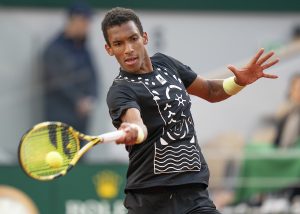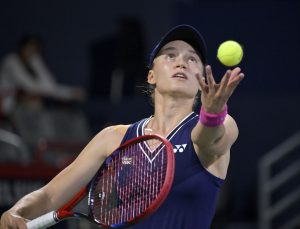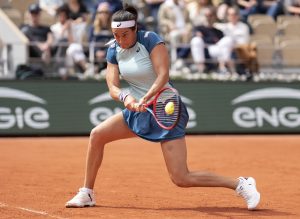Last week, in the wake of two genuinely epic Davis Cup semi-finals, the International Tennis Federation (ITF) unveiled proposals for both the international men’s and women’s team competitions that could prevent any future Davis Cup or Federation Cup tie from ever attaining “epic” status, in the process devaluing them both and perhaps even ultimately destroying them.
It must be emphasized that the proposals are precisely that–proposals, or suggestions, outlined by the ITF’s President, David Haggerty, in an attempt to try to shore up the popularity of both the Davis Cup and its equivalent in the women’s game, the Federation (or simply “Fed”) Cup, at a time when so many of the game’s leading players are either choosing not to play international team tennis at all or, if they do, to commit to it for only one season at a time.
Among the changes to both the Davis Cup and the Fed Cup that are being proposed are staging the final (or even the semi-finals and final) of both competitions in a “neutral” city for two or three years at a time, rather than in one of the countries that actually make the final; shortening the matches from best-of-five sets to best-of-three; and staging the finals over two days instead of three.
Davis and Fed Cup Plans Risk Destroying the Great Team Competitions of Tennis
The most contentious proposal is undoubtedly the switch to a “neutral” city for the final, and the Davis Cup’s most prominent ambassador in recent years, Andy Murray (who was instrumental in Britain winning the competition in 2015, for the first time in 79 years), was quick to question it, saying, “The home and away aspect of the Davis Cup is something I enjoy and makes it different and special… It is something that we as tennis players aren’t really used to because when we travel around the world we are playing in neutral venues a lot of the time.”
Andy Murray is certainly not alone in expressing his reservations about staging the final in a “neutral” venue. What makes the Davis Cup unique in tennis is that it positively encourages the kind of energetic and vibrant partisanship that is so commonplace in almost all other major sports but so often lacking in tennis. Almost all the fans, commentators, and reporters at Davis Cup ties attest to the entirely different nature of the crowds in comparison with most other tennis tournaments. They are usually younger and certainly more vociferous, as epitomized by the students from Stirling University’s “Barmy Army,” who have played such a visible and audible role in supporting Britain’s recent success in the tournament–so much so that just a few days ago Andy Murray visited the university campus with the Davis Cup trophy. (Having fought so hard to help GB win it last year, he is obviously determined to make the most of it before it has to be handed over to the winner of this year’s final between Argentina, Britain’s conquerors, and Croatia.)
The prospect of staging the Davis Cup final in a “neutral” venue risks eliminating all of that wonderful, almost tribal energy, and making the Davis Cup just one more typical tennis tournament.
The second main suggestion from the ITF, about reducing matches to best of three sets, is potentially even more damaging than the proposed move to a “neutral” venue for the final. Probably the greatest single difference between the Grand Slam events and almost all other tennis tournaments (including even Masters 1000 events) is that they are played over five sets rather than three. Put simply, five-set matches are the ultimate test of a tennis player; they are the only format that allows a tennis match to attain genuine, incontestable epic status.
The Oxford English Dictionary definition of “epic” (both as a noun and an adjective) is, “A book, film, or other creative work” (which surely includes a tennis match) “resembling or likened to a traditional epic, especially in portraying heroic deeds and adventures or covering an extended period of time.” It is the temporal aspect that is arguably the defining quality of an “epic” event; anything that is truly epic both has to take time and embody the ebb and flow of time (with five-set matches allowing players to come back from disastrous starts in a way that three-set matches simply do not). In a period when there is widespread discussion about extending at least the semi-finals and finals of women’s Grand Slams to best-of-five sets, it would be utterly perverse to reduce or shorten Davis Cup or Fed Cup matches to best-of-three. Andy Murray may be enthusiastic about the idea, especially after the exhausting (if successful) summer schedule that eventually led to his defeat against Juan Martin del Potro in the first singles tie of the recent semi-final, but he should also remember that what made his Davis Cup triumph with GB last year so memorable was that he had to play several best-of-five set matches to achieve it, perhaps most memorably with his brother Jamie in the semi-final doubles match against Australia’s Sam Groth and Lleyton Hewitt, which lasted for more than four hours.
Mention of that great doubles match brings me to what is perhaps the most serious charge to be made against the ITF’s proposals for the Davis and Fed Cups, namely that by reducing their finals to a two-day event rather than the current three days they will probably hammer the final nail into the coffin of doubles tennis as a serious sporting contest in its own right.
It is remarkable to think now that for most of the history of tennis, doubles was afforded–if not exactly the same status as singles–then certainly a comparable status, and that it was only Bjorn Borg’s decision in the 1970s to abandon doubles to concentrate on singles events that eventually prompted other top singles players (especially male players) to abandon the four-player format. Even then, John McEnroe took great delight in reaching World No.1 in both singles and doubles (with his usual doubles partner, Peter Fleming, downplaying his own contribution to their team by saying that, “The best doubles team in the world is John McEnroe plus A.N. Other”). Now, however, for all the brilliance of the Bryan brothers over the last decade or so, it is only at Grand Slams and in the Davis and Fed Cups that doubles gets anywhere near the attention and coverage that it deserves.
Any true tennis lover has a special place in their heart for doubles, not least because in the current baseline-dominated game it is about the only place where the ability to volley (which was once the cornerstone of any great player’s game) is still prized. Reducing the final of both the major international team events from three days to two days would inevitably mean that the top singles players, such as Andy Murray, would be unable to play doubles as well as singles (even if singles matches are reduced to best-of-three sets). That is not only regrettable in and of itself; it also limits the number of nations that will be able to compete effectively for the Davis and Fed Cups, effectively reducing the main contenders to the bigger, more populous countries. At present, it is feasible to win the >Davis or Fed Cup with just two players, as Switzerland did in 2014 when Roger Federer and Stan Wawrinka finally teamed up to play both singles and doubles, thus securing what may prove to be the great Federer’s final, indeed crowning, achievement in tennis.
Now, enough carping about other people’s proposals; how about one of my own? Well, it is simple, really. The ITF itself proudly declares the Davis Cup to be “The World Cup of Tennis”, even going so far as to register and trademark that term. Well, it should actually make the Davis and Fed Cups genuine World Cups of tennis by staging them just once every four years, for one month, in which the top 16 tennis nations in both the men’s and women’s game (which would be determined by the performances of their top two or three players over the previous four years) would duke it out in time-honoured fashion: over five sets, including doubles matches, and with the final to be staged perhaps as a two-legged affair, both home and away. Of course it would require considerable rescheduling of the world game for one season in four, but it would also finally ensure that the top international tennis team tournaments are deserving of the title, and it would certainly do more to protect their status than the ITF’s own proposals.






